BONELAND
The North American Prairie.
After the great Laurentide Ice Sheet receded around 12,000 years ago, the climate began to moderate; this time without the large predators that died out during the long ice age. Central North America became a paradise for grazing animals.In 1800 CE, the North American Prairie extended over 1.4 million square miles of almost unbroken grassland. Occasional dry season wildfires burned the dormant winter grass, killed tree saplings, and fertilized the earth. The ground was rich topsoil for several feet in depth and the nutritious grass was produced by the tens of millions of tons each year. The grass was tough, hardy, and highly nutritious for any animal who could chew it.
There was one species provided by evolution that was ideal for browsing on the prairie grass: the American Plains bison (herein called the “buffalo” since that was the erroneous popular name assigned to it by American settlers).
By nature, the buffalo was gentle, even though a male could be six feet tall and weigh over 2,000 pounds. It was a herd animal that spent its life grazing on prairie grass and having little buffalo. The prairie grass was almost unlimited and the buffalo multiplied to fill the fecund niche nature had provided over the millennia. The females each produced from three to seven young on alternate years. Wolves and Native Americans were their only natural predators but the effect of predation did not materially affect their population growth.There were a lot of buffalo on the prairie! No one knows how many were there before the Westward expansion began, but there were at least a hundred million.
The earliest observations o the number on the grasslands was from Thomas Farnham from his experience in 1839 while traveling along the Santa Fe Trail. It took him three days to pass through an oncoming herd. He said he could see fifteen miles to each side for the forty five miles he rode the trail and the herd was everywhere he could see! That one herd, within his sight, covered 1,350 square miles; only a tenth of the grasslands!
In the summer of 1859, Luke Vorrhees rode two hundred miles along the South Platte River, passing through one herd the entire time.
In the late 1860’s, General Phil Sheridan and Major Henry Inman made an effort to estimate the size of a herd they passed between Fort Supply, Oklahoma and Fort Dodge, Kansas. General Sheridan graduated from West Point, in 1859 as an engineer, and was capable of making estimates, one would assume. His findings were that the herd was a hundred miles wide and of unknown length (since he did not traverse the entire length). Their first calculation of the herd size was ten billion buffalo! He reworked his numbers and chose a more believable one billion. He reduced it again to one hundred million buffalo before submitting the report to Washington, knowing that no one would believe a billion animals could exist.
In 1871, George Anderson wrote in a letter to a friend about a herd he has seen: “I am safe in calling this a single herd, but it is impossible to approximate the millions that composed it. It took me six days on horseback to ride through it.”
That same year, Colonel R. I. Dodge encountered a massive herd along the Arkansas river and estimated it to be twenty five miles wide and fifty miles long
So, there are no accurate numbers; nor will there ever be.
Killing buffalo
Professional buffalo hunters were beginning to gain fame in the Eastern press by killing large numbers of the animals while they grazed. At first, the hides were taken and the animals left to rot where they fell. An article about “Buffalo” Bill was popularized when he killed 4,200 buffalo over eighteen months; a princely sum to earn during the Civil war when the hides brought four dollars each!Reading that news, hundreds of men went West to kill the American buffalo. They were followed by thousands more and the number of hunters increased daily as the hunters brought the hides to railroad towns to be bought by shipping agents who shipped them back to New York. Word spread in the East about the easy money to be made by killing buffalo, and that attracted more hunters. Month after month, the attrition rate increased and the now-proficient hunters were killing sixty thousand buffalo a day. Every day.
It was an easy thing to do, requiring minimal skill. A “hunter” would find a small rise higher than a buffalo, set up his forty or fifty caliber rifle, adjust his sights, and begin firing into the grazing buffalo within three hundred yards of his position. It did not require moving; just firing, reloading, and firing until the gun was too hot to reload, or until the hunter simply got tired of shooting. Through it all, the buffalo continued grazing, seemingly ignoring those fallen around them .
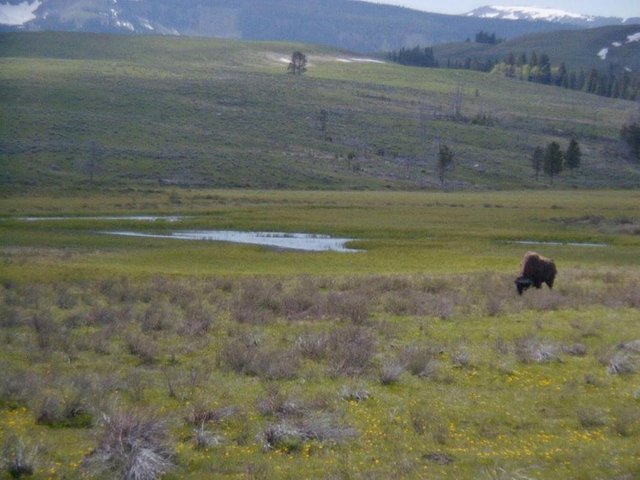
At the end of a day, a hunter could have fifty or a hundred dead animals to be skinned and, for the inexperienced or lazy, an equal number of wounded animals that may or may not be killed for the hides later, but bullets were twenty five cents each and not worth wasting on a non-threatening animal.
The Skinners would slit the animal from its tail up to its neck, and then around the neck. They drove an iron stake through its nose into the ground, tied horses to hooks inserted through the tough hide on the back of the neck, start the horses, and strip it off like a banana being peeled. Every fifty animals killed would yield maybe forty good hides staked inside-up with the hunter’s name carved into the underside. They gave the hides a few weeks to dry, and then would transport them by wagon the the nearest railhead. The hunting teams were limited in the numbers they could kill, skin, and transport, and fifty or sixty made a day’s work for a three-man team.
The skins began piling up near the railroad junctions, and the volume shipped east steadily increased. There were over forty railroad companies laying track throughout the Kansas Territory, increasing access to the interior of the grasslands and accommodating more hunters.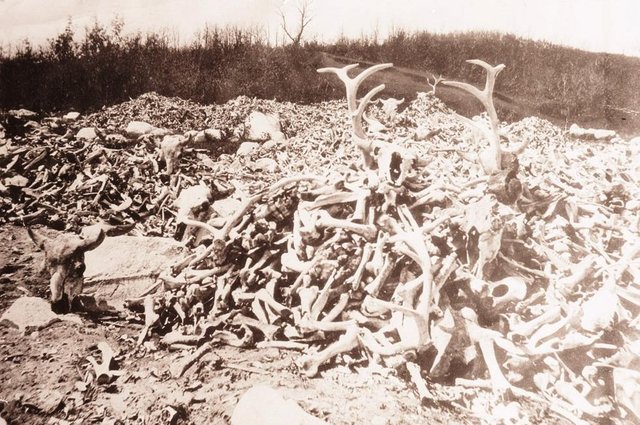
For the past twenty years, buffalo bones had been accumulating after the elements rotted the flesh and scavengers cleansed the bones. The stench of rotting flesh meant that almost everyone wore bandannas to reduce the odor, although a great part of that was from the hunters not bathing through months of constant killing and skinning of buffalo.
When the Civil War ended in 1865, thousands of ex-soldiers, unemployed workers, and those seeking adventure and fortune flooded West. The new government encouraged men to seek their fortunes and paid for soldiers’ passage on the railroad that was forging its way towards Kansas’ western border. The U.S. Army even gave men used rifles and a supply of ammunition as an increased incentive to hunt buffalo.
The main business of Dodge City was outfitting hunting teams with wagons, horses, skinning knives, ammunition, tents, food, and bottles of strychnine. A complete outfit could be purchased for $1,200. The hunting teams were growing larger and the more serious ones would have several wagons, a cook, a few Hispanic laborers, two hunters, and three skinners.
The hunting teams – or more appropriately, "harvesting teams" - were like small businesses designed to make the most money possible. They set up camp, pitched tents, and began killing buffalo. At the end of the first day’s killing, the skinners began and the laborers began cutting “bait meat,” pouring highly toxic strychnine onto it, and scattering it around the camp two hundred yards out. Baiting the wolves would kill forty or more the first night, reducing the threat to the camp and damage to the hides. The wolf hides would be collected for the small collectible market and for taxidermists. That was common practice and massive damage was done to the wolf population, almost driving them to extinction across the plains.
By that time, the thousands of hunters were taking hides, slicing off the animals hump, taking the tongue out and leaving the rest. The tongue was delicacy back East, but the shipping cost for the humps made it unprofitable for the hunters’ trouble, and that part was once again ignored.
At least a hundred million buffalo roamed the plains in 1865 at the end of the Civil War. By then, the wholesale killing in the center of the massive herd had separated the world’s largest herd of animals into a northern and a southern herd of about equal size. For those who noticed, the herds were getting thinner along the railroad route, but the white settlers considered the buffalo a smelly pest that impeded rail traffic, pushed over telegraph poles, and made homesteading dangerous for the increasing number of farmers.
"The Indian Problem"
At the same time, the Indians were becoming a real problem for the Army garrisons because they were killing settlers and some of the buffalo hunters. It was the U.S. Army’s job to take care of those things, but the war with the Confederacy had priority until the end of 1865. When it was over, Major General Phillip Sheridan was put in charge of resolving “The Indian Problem,” as President Grant branded it. General Sheridan was instructed to, "make them poor by the destruction of their stock, and then settle them on the lands allotted to them."Sheridan took his orders to heart and set out to kill all the buffalo to starve the Indians. “Buffalo” Bill Cody attempted to get the Texas Legislature to forbid poaching buffalo on Indian lands, but Sheridan won out by telling the lawmakers:
The Killing Increases
The railroads began penetrating farther West, making everything easier for the migration of settlers and new hunters. Killing buffalo became easier and more profitable for everyone. By 1867, a hunter with an army surplus Springfield rifle could kill up to two hundred fifty in one day. The price of hides was falling, so they killed more and more.Thousands of tons of bleached bones littered the central grasslands.
Hunting and processing dead buffalo hides had become a growing business with completion of railroads into the central part of the country. Getting there was now easy compared to just a few years prior. Arriving passenger trains brought new settlers and new hunters.
The railroad companies began running special excursion trains for hunters where the train would run along a track and allow two hundred armchair hunters to shoot buffalo from the moving train! More were probably wounded and died later than were killed for immediate enjoyment, but unknown thousands were killed by those recreational “hunters”. The excursions were quite popular and even women could "experience a Western adventure".
That was such sport, even buffalo-killing contests were staged. Men who had never fired at a live target got to practice on the animals. The winner in one contest killed a hundred and sixty animals in forty minutes. All the animals were left in place to rot, including the wounded. No one cared.
No one except the American Indians. They believed the buffalo were gifts from the Great Spirit and the respect they had for the buffalo bordered on worship; just as their respect for the world in which they lived guided their "footprint only" existence. They used every part of the buffalo and honored its spirit for sustaining their lives.
No one can be dispassionate after reading over five hundred pages of details. Little things, such as Lakota native American, Vernell White Thunder’s comment about the buffalo:
"Buffalo were the basis of our life. We ate all the meat, the humps, tongue, heart, marrow. Some even ate the testicles and fetuses. We used the hides for making moccasins, tepee covers, robes, and leggings. We used the buffalo hair for ropes, sinew, and bowstrings, horns for spoons and cups, hoofs for rattles, teeth for ornaments, the bladder for a container. We even used the dung for fuel; with buffalo dung you could keep a fire going for days.
The U.S. Army defeated us by killing off the buffalo."
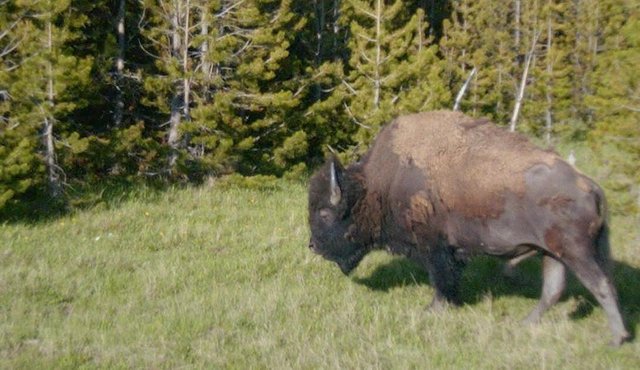
A gift from the Great Spirit. Image by @willymac
In 1874, one bone collector said that western Kansas to Colorado and Wyoming was so littered with bones that he could not walk more than twenty feet in any direction without finding the skeleton of a buffalo. From a hilltop, the grasslands looked like the ground was white.
Boneland
Between 1872 and 1874, the entire Southern herd of buffalo was killed by hunters.Fifty million animals had been slaughtered in nine years in the most egregious, deliberate act of cruelty ever wrought by humans.
Attention then turned to the Northern herd as railroad access increased and jobs moved North.
The bone business was now as large as the hide business had been. The bodies of fifty million animals were littering the grasslands for hundreds of miles an every direction and people began collecting the bones by the wagon load and taking them to the railroads to be shipped back East. Nine or ten dollars for a ton of bleached bones! Back east, they would be ground into powder and used for fertilizer.
From 1872 through 1874, The Santa Fe Railroad shipped 459,453 buffalo hides and 10,793,350 pounds of buffalo bones. At the same time, in the same area, the Union Pacific shipped 918,906 hides and 21, 586,700 pounds of buffalo bones. That was just two of over a hundred railroads shipping hides and bones.
The Northern Herd
Over the following years, the killing activity increased rapidly and reached its peak around 1877. The shipping of bones began as soon as an area was cleared of buffalo since the large Empire Carbon Works, in St. Louis, and factories in Philadelphia, Baltimore and Detroit were in full production. At forty million dollars a year, the bone trade was very big business.The scarcity of buffalo was already noticeable in some areas and the Indians were beginning to starve without their food supply. To buy food, many were reduced to scavenging the bones of their wasted buffalo to sell for six dollars a ton; always less than the ten or twelve dollars paid to non-native gatherers.
The railroads and the influx of immigrants and homesteaders created a massive increase in the demand for lumber as a building material, and there were a hundred large sawmills with shipping depots at railroad towns throughout the wooded, northern terrotories. Settlers could collect bones and trade them for building lumber at the depots, and the bones were shipped east. One lumber firm recorded shipping a thousand carloads of bones each year from 1884 – 1890: seven thousand railroad car loads, each containing the bones of eight hundred fifty buffalo! 5,950,000 buffalo from that one shipper! And there were hundreds of shipping points!
The Northern herd collapsed suddenly during 1881 and 1882. The killing, the loss of free range and then their food supply was the major contributor. An outbreak of a cattle-borne tick fever probably helped their demise, but it was a sudden disappearance of millions of buffalo. The bone collectors continued until 1900.
Starvation among the Indians was widespread and hundreds sought refuge near army posts, awaiting handouts of food and clothing. Even with Indians dying from starvation, it took the Department of the Interior almost two years to begin supplying food to some of the posts.
No one cared, except the Indians. And the Great Spirit.
The fifty million animals of the Northern herd were gone..
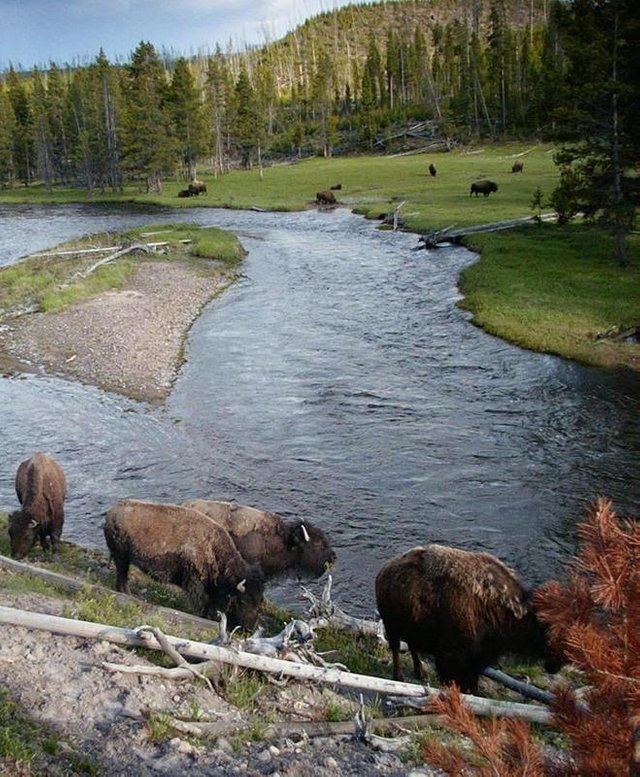
In 1891, a small herd of twenty three buffalo was found in an isolated part of the new Yellowstone National Park. Wyoming cattle ranchers wanted them killed, but President Teddy Roosevelt ordered them to be protected by the Army as a National Resource. Of the hundred million in the 1850’s, only twenty three individuals remained thirty years later! Today, the Yellowstone herd is around 3,500 animals, and is still protected. Ranchers still kill them if they wander outside the Park’s borders.
In researching for this, I ran across a statement in a current,“scholarly” work by an author attempting to rewrite history relating to the buffalo’s demise:
Google it, if you wish. It does not merit even a source reference.
Resources:
The Extermination of the American Bison, Hornaday, 1887 (excellent!)Buffalo Land, W. E. Webb, 1872
Buffalo Bone Days, M. I. McCreight
history.nebraska.gov/blog
medium.com/@davidbunnell
North Dakota History- Journal of the Northern Plains v50, Winter, 1983 #1
Rangelands 17(5), October 1995
theatlantic.com/nationalarchive/2016/05/the-buffalo-killers/482349
www.pbs.org/wnet/
A month ago, an excellent post by @janton about the Founding of Dodge City included photos of piles of buffalo skulls and hides. The intentional killing of the buffalo is something not taught in school and that prompted this factual overview.
About Me:
My Writing:
- Losing Shirley
- Jules, Freddie and the Monkey Man
- The Foot
- Beans
- Timeline
- The Time Tree
- The Little Lake Without a Name I
- The Little Lake Without a Name II
- Dog Friends – Inza
- Dog Friends – Sara
- Dog Friends – Millie
- Philonous, Where Are You?

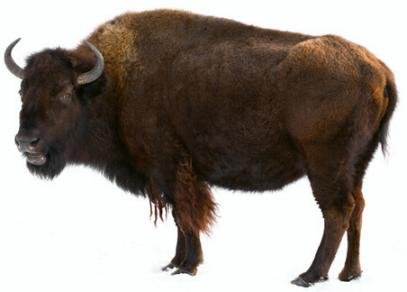
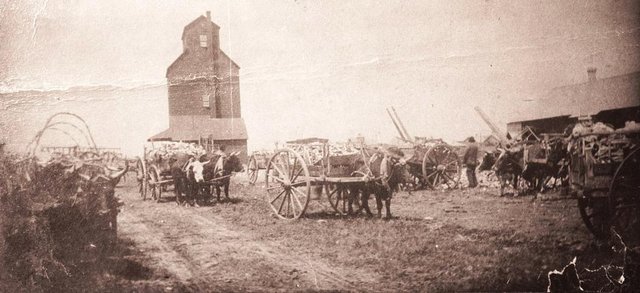

I found lots of unknown ( to me) info on Buffalos . Thanks. 73
I'm really pleased you found it informative.
It gives a more truthful view of our settling of the West when you know what really happened to the buffalo and the Indians. Shameful stuff.
it was amazing reading such a thorough and detailed rendition of the plight of the buffalo.
Humans can be cruel and blind at the same time. this is what has hurt the ecosystem. I knew all along that people have destroyed Africa in the guise of keeping animal population in check. After reading your article, it seems like America has pretty much done the same.
One wonders what would have happened if America were not so capitalistic.
Don't you wonder at how little respect mankind has for nature? do we have any reason to be proud of our existence at the top of the food chain?
will man get his comeuppance one day from a totally unexpected direction?
i dont think it is easy to find the courage to serve as a witness to the excesses of man as he continues terra forming nature to further his exploits.
beautifully written article as always.
The more I read, the more upset I became by the foolish, selfish, cruelty mankind can exhibit towards other beings. We can never seem to reach a balance with nature and our surroundings, especially when it means limiting our own population increase. Instead, we eradicate other species, remove and change their environment to suit our needs and never learn that we can only do that so many times and our own species will have become unsustainable.
The most painful images I have in my memory are those of animals suffering because people are too self-centered to understand that we are not the only ones with feelings and innate rights. Even seeing someone cut an old tree to improve their view angers me.
Why can we not get along with Nature's solution to maintaining life on Earth and establish limits for ourselves? If we do not, Nature will certainly come up with a correction of some sort we will find thoroughly unpleasant for our maladjusted species.
good day to you sir willymac! wow I'm blown away by the details of this post! That was some heavy research and the result is excellent. To learn how those hunts were encouraged, funded and organised is shocking and I didn't know about the shooting parties put together by the railroads for recreational killing from the moving cars!
It's sickening. Were people back then so calloused? Murder for sport, I just can't get my head around that. And murder of such a majestic animal.
Thanks for the mention, I wish this had been posted before mine and I could have directed people to it because this is a masterful research and education piece. And you say they don't teach any of this in schools?
thank you sir for your diligent and scholarly work!
Thank you also, sir, for your positive comments. Coming from a respected Texan, they mean a lot.
Researching the subject was very upsetting for me to begin to understand that people simply did not care about the bison as a living being and had no feelings at all about it being a non-aggressive, browsing animal. They felt nothing at all when shooting one as if they were shooting targets. No one expressed regrets at the time, or at least it was never popular to report in the papers. Besides, the ladies enjoyed shooting them with pistols as the trains passed. After all, they would be back in Boston before the animals died of their wounds.
People who were there at the time and wrote about them did not think they were especially aggressive or individually dangerous, but the more recent the writing, the more dangerous and fewer in number they become!
The history has been so sanitized and rewritten as to make it a non-event. PBS blamed it on the Indians getting horses and rifles and killing them (as if the Great Spirit gave them a special exemption to kill for fun); on a drought killing the prairie grass; on "some soldiers" killing bison to spite the Indians, and on sports shooters who "traveled west to shoot the animals by the dozens."
Dozens?
The PBS reported estimate was that 30 million were in the US when the Europeans arrived here. That took care of the other 70 million that would be harder to explain, so they just made them disappear from history by fiat!
The more recent the "research", the fewer bison there were and the more natural the causes were. They do the rewriting of history to clean up the image of our past. After all, no one would really do such a heinous thing.
But they did, dammit! They did it to kill the Indians' food supply and then they let the Indians starve.
I have to stop and hyperventilate now...
willymac! oh man, that is so shocking the way they are rewriting history so drastically to clean it up, I had no idea. And if they do it in this case, they may be doing it with many other things as well! oh my gosh, very alarming.
After reading a few hundred pages of reports from the late 1800's, you get to believe the things written by the people who were actually there at the time are accurate reports. Their view of the widespread outright murder of the bison is uniform throughout the Great Plains. The reports and letters were from people who did not know each other, but none disagree that the slaughter was as reported.
There is clear evidence that the most recent writings about the Great Killing all try to minimize its importance, to shrink the numbers, and to make it more the Indians' fault and by-products of nature than any intent by the invading white men.
Reading books from the early 1870's give a picture that is more realistic and vastly different from the new, sanitized versions. Yes, it is alarming, and yes, that revisionism is going on to see the past through our current moral and political filters.
I wonder how secure those archived books are? If they were "accidentally" deleted, out past will be forever changed.
oh my gosh sir willymac, that last sentence is chilling and totally possible isn't it? well, I hope most things aren't that important to them to want to go back and change them but who knows these days?
blame it on the Indians! that sounds about right. idiots and morons.
Yep, it's the Indians' fault, according to PBS. ""American Indian tribes acquired horses and guns and were able to kill bison in larger numbers than ever before."
The Great Spirit must have told them to ignore their spiritual beliefs and go out and kill every animal they could find.
That is so patently untrue! But, it is what kids will find when they go to a "reliable source" for their research.
ha! yes sir that is insane! wow you had to step away at times when you were researching this stuff didn't you?
Yep, I got a bit agitated at times. Human misbehavior gets to me more easily than most other irritants.
I still can't flush the image of the freezing Indian woman and her two starving children trying to grab slaughterhouse offal from the pigs through a fence.
We have much in our history to be ashamed of.
Some things just ain't right, my friend.
When you control the education and the money, you control the history...
The few that are left, are a magnificent site though. We would have been better off if instead of cattle, we were hearding and breeding bison. They were designed for this land and better suited for it.
Domesticating or cross-breading the bison would have been a better choice since the bison were tailored by nature for the grasslands.
However, they would have remained as the food supply for the Indians, and that would hinder the westward expansion and we probably would have ended up in the same place. Homo Sap always chooses the "correct nature's mistake"solution.
I agree, there is actually a farm down the road that has some "Beefalo" they are pretty wild looking animals, but pretty close to Buffalo. It's funny they have them in a field with llama, emu, peacocks, donkey, and horses. Quite a menagerie.
I have an Emu, had a donkey, chickens, and goats; always wanted a llama, and fancied getting a horse. I ended up with eight goats and then the donkey and the Emu. It has been a zoo around here!
I read that all the buffalo outside of Yellowstone have cattle mixed in their DNA. They look much more like majestic animals in the wild.
Traveling in northwestern New Mexico, I saw a beefalo in a 20 by 20 foot fenced area next to a cheap tourist trap. The poor thing had pure sand without a blade of grass to even pretend to graze on,and a water trough, but no shelter. I assume they fed it.
It broke my heart to see the poor herd animal totally alone in that pen.
Yes, being alone would suck. I was thinking I saw some along a few of the long stretches of highway in Kansas 10 or 12 years ago, but maybe they were not pure blooded. It was large open land and quite a few of them, it was a beautiful site.
There is something restful and pleasing about seeing a herd of grazing animals. That always causes me to slow down - and sometimes stop - just to enjoy. I saw a small herd of Highland cattle in Montana and stopped to "take a quick look" that lasted over an hour, and he same thing again in New Mexico in passing a group of two dozen llamas. I waited until they ambled over to me and I got my temporary fill of petting llamas. Not a soul in sight and not a vehicle passed in a full hour. Simple things, but ended up being the best parts of that long drive.
Hello sir @janton, How did I know you would show up on this post..... I had to scroll the comments just to check, and if not an intoduction would have been in order....
howdy sir coinsandchains this fine Thursday! did anyone ever tell you how important you are becoming to this platform? God bless you!
Well Thank You my friend. I doubt I'm really that important, I'm just enjoying myself. Other than the Church, I don't have any social outlets, so you guys have become my "water cooler" conversations... I appreciate the interaction, it keeps me from going stir crazy.
yes sir well we appreciate you taking the time from your crazy schedule and you ARE becoming more and more important, I wonder how things will look a year from now...look you're almost a 50 already! great job man!
So well written, and so, so sad.
I did some research for a paper in college and found out that mankind has been the largest extinction event the world has ever known. Just since mankind's appearance on earth, more species have gone extinct than in all the other largest extinction events (ice ages, meteor strikes) put together
Agreed, @corpsvalues!
I once envisioned a virus-emulating display that tracked the spread of Homo Sapiens from Africa across the Earth's surface as a black area, while showing other species presence in color. As we spread and the black area invaded other habitats, the interface area would become increasingly black as the encountered species was replaced. No one could deny that we were the cause and - from the Earth's viewpoint - we are filling the function of a non-sustainable virus running unchecked throughout the biosphere. The once-habitable part of the planet is already some shade of black.
The big difference is that we KNOW we are doing that, and a virus does not.
Not that I'm pessimistic about our ultimate effect on this lovely blue marble.....
This is by far my most interesting read to date on this site . Amazing piece. These are the kind of posts that should be getting the real upvotes . I can’t get over how plentiful the buffalo were. A herd of 100 miles ?? Jesus Christ!! The wolves dying with the poisoned bait is very interesting . All that killing. Just shows you what we will do for money.
Wow! Thanks for that, @blanchy! I'm going to print that and keep it as my reward for doing the research.
When driving across the middle of the US, crossing the Great Plains and even today while seeing nothing but grass (or corn, or wheat) to the horizon and imagine what it was like back in 1800 before fences and people for a thousand miles by five hundred miles; that it was one large pasture of grass, with no mountains or impassable rivers to contain the bison. It must have been the most glorious sight possible to see so many animals within touching distance of each other browsing as they walked slowly along.
I will always believe that General Sheridan's estimate of one billion bison was closer to being accurate than the 100 million he reported because he thought no one no one would believe his first estimate. That is only one animal for every eight acres; far fewer than the land would support.
Hi willymac,
Visit curiesteem.com or join the Curie Discord community to learn more.
Thank you, Curie team! Your support has more than made my month a success!
Thank you, Curie team!
Your support has more than made
My month a success!
- willymac
I'm a bot. I detect haiku.
Great piece of knowledge @willymac
Glad to see Almost 800 upvotes, that's huge
Thank you, Hanan. It is shameful to me what we did to those animals. I do not want people to forget the event and how magnificent the herds of bison were.
You're welcome @willymac
Every living being should have the liberty to live freely and have all the basic rights.
It's some memories we can learn of
I agree, my friend. PEOPLE decided that animals did not have feelings and needs. The animals did not get a vote in that incorrect decision.
I agree to it too, people made a wrong decision there.
Animals are more innocent and should be given more care actually, they do not speak against the incorrect. People need to stop killing or hating and start loving everyone.
The first step in better treatment for animals is accepting that they are thinking beings and not just food sources.
We have to stop eating them. As long as we consume their bodies, we cannot allow ourselves to believe that they have emotional feelings like fear or affection.
If you think of any animal as a strange form of a human, kept in a pen, never allowed freedom or education, forced to breed, and having family members being killed and their bodies cut up and used for food, it stops being a source of food and becomes a thinking being with feelings. After a while, it becomes quite repulsive to think of eating a dead animal's body parts.
That's true every religion teaches us to be good to the animals and take care of them as much as we can.
We can avoid eating animals but if we are getting enough substitutes. They do have emotional feelings and we should accept that.
That's a good idea I would say, we got to think of it the other way around, but then even plants have a life and we do not really have options there. We can at first stop killing animals for fun and start taking care of them and give them freedom, it will be a long process but it will help
I did not know how organized the slaughter of these incredible beasts was. Thank you for researching and sharing this horrific bit of our history. It is impossible to imagine their vast numbers, and also impossible to imagine a landscape covered with their bones.
I'm pleased that you found it informative, Melinda.
I was surprised by the number of people who made full-time jobs of killing them; an estimated 8-10 thousand people at the same time! Reading the old reports and letters, the horror of it was even worse than in my short summary. We should never have allowed the buffalo "hunters" to become popular heroes. We also should teach our young about how it really happened and not just the sanitized movie version.
Most of the history we are taught is the sanitized version, isn't it? Truth is such a fragile thing. Thanks for putting this out there. Resteemed and tip!
Wow, thanks, Melinda! A valued gesture these days!
And yes, I think most everything we are taught goes through a set of filters before we get the acceptable version, and even that will change as the political and cultural winds shift direction. Some editing is needed for brevity, but most editing is to obscure the parts we "don't need to know" for political reasons. The older I get, the more convinced I am that someone has decided that the less we know about the true path we took to get to where we are as a culture, the easier we are to manage by those who think they know what is best for us.
That is another reason that old books give a more valid viewpoint of an event than the version produced by learned pundits later on.
You are very wise and of course I agree with you completely! When you see how the information about last week, or last month or last year gets manipulated it's easier to understand how the information from 100 or 500 years ago has been altered.
It takes a person with a weak, insecure mind to think that altering historical events to fit the political environment of today is a good thing to do. Facts are facts, and they should not be erased and replaced with "what they really meant was..."
If you look at the language used by educates people in the mid-1800's, their vocabulary was very large and their phrasing far more sophisticated than the short sentences filled with little words we see now. I f people paid that much attention to their writing, I'm certain they wrote exactly what they meant to write, so why not believe that they knew what they were doing?
Too many groups of people think Old = IGNORANT. Old ideas, old books, old writings, old stories: none can be relied on because...what could they know we sophisticates of today do not know?
A lot, probably.
A lot, indeed! We have become such an ignorant society. I would worry that we are a lost cause, except that I know too many brilliant young people who are overflowing with ideas. I think they will save the world!
I wish I shared your optimism. Most young people with ideas are not running businesses that are making the bad decisions or have a grasp of how complicated the mess we have created is, or how much it will cost economically and socially to correct the accumulated mistakes of the past.
In any case, I don't think we have the time left to correct things. Things are reaching peak "bad"day-by-day.
Hi @willymac! You have received 0.1 SBD tip from @melinda010100!
Check out @melinda010100 blog here and follow if you like the content :)
@tipU voting service | For investors.
Thanks, @melinda010100! You're on my follow list!
@willymac Thank you for not using bidbots on this post and also using the #nobidbot tag!
This is an amazing look at the slaughtering of the American bison. I don't remember now when I first heard about it, but I know the information wasn't nearly as in depth as you provide here. Thanks for taking the time and your cue from janton.
I think it's good that we get history the way it happened, or as close to it as can be done a hundred fifty or so years removed. There's way too much revisionist history going on, apparently from all sides, motivated by agendas. I find that neither helpful or honest. There's plenty to find fault about or to praise without making things up and claiming they did or didn't happen.
So, thanks for doing this. And congratulations on the curie. It was well earned. :)
Thank you for the compliment, Glen. It means a lot coming from you. I assumed that following the standards you set, I probably would be doing the acceptable things. Except for the tons of comments you make. I would use up my annual quota of typed words if I tried!
I remember learning about the buffalo's demise from the seventh grade.. There was a picture of an Indian riding a pony beside a buffalo while running at full tilt. The Indian had his bow drawn full preparing for a kill. I don't remember anyone mentioning the massive number of buffalo or how quickly it was all done. Having been a great cowboy wannabe back then, I'm sure I would have remembered more details had there been any.
One thing I noticed during the research was that the more recent a reference, the smaller the numbers became. Hunter counts, buffalo, Indian deaths all seem to shrink so they became unimportant, incidental events. There's no way to tell if that was intentional or not, but the shrinking buffalo herds are suspect. Modern "experts" seem to start out assuming that the people who were there at the time were not smart enough to record what was going on.
That same thing goes for any ancient archaeology: current experts know more than the ancients because what they "know" must fit the established dogma and that means no thinking outside the established box. Even ancient writings are thrown out as being allegoric if they contradict what current day experts are certain of their current interpretation of the ancient past. There is a book, Hidden Archaeology, that is filled with things that don't fit and that can get a Ph. D. professionally defrocked for discussing alternatives to established timelines to accommodate things that don't fit it.
Egyptian history is an unverifiable zoo because a few "experts" have decided what history was.
Like you, I believe that history is what it was and it's not something that should be changed to fit current day social of moral mores.
Congratulations! This post has been upvoted from the communal account, @minnowsupport, by WIll from the Minnow Support Project. It's a witness project run by aggroed, ausbitbank, teamsteem, someguy123, neoxian, followbtcnews, and netuoso. The goal is to help Steemit grow by supporting Minnows. Please find us at the Peace, Abundance, and Liberty Network (PALnet) Discord Channel. It's a completely public and open space to all members of the Steemit community who voluntarily choose to be there.
If you would like to delegate to the Minnow Support Project you can do so by clicking on the following links: 50SP, 100SP, 250SP, 500SP, 1000SP, 5000SP.
Be sure to leave at least 50SP undelegated on your account.